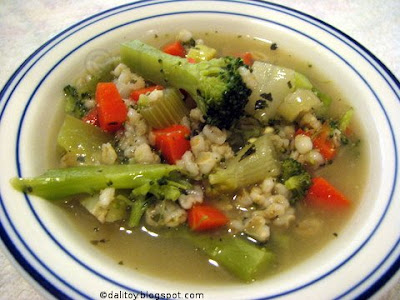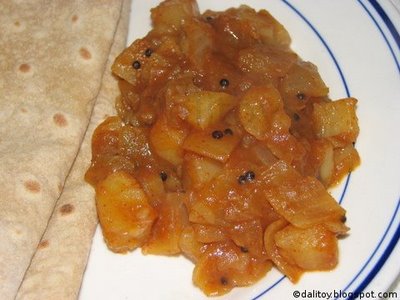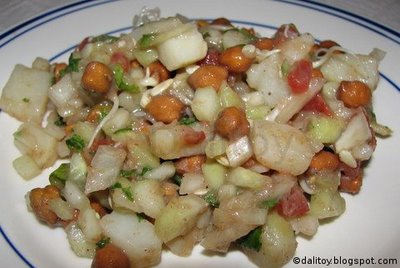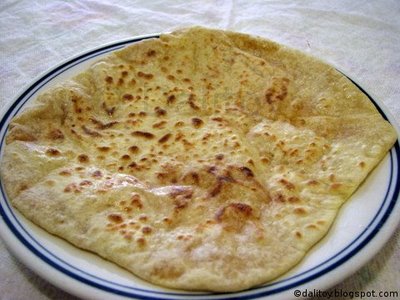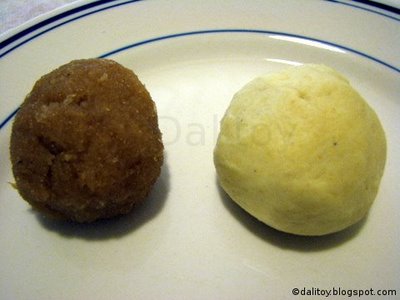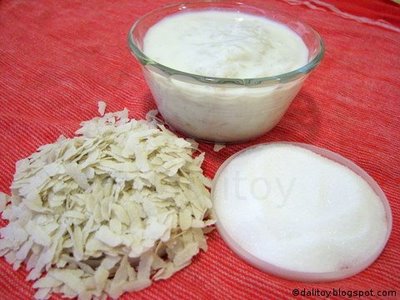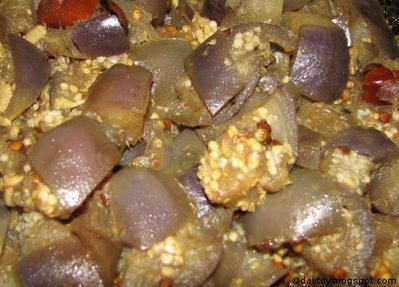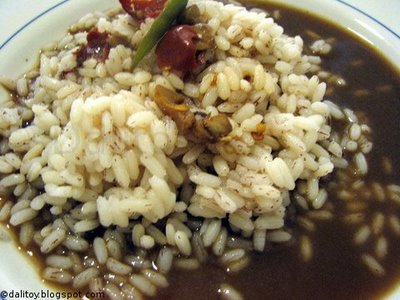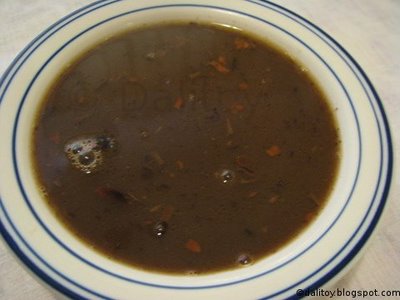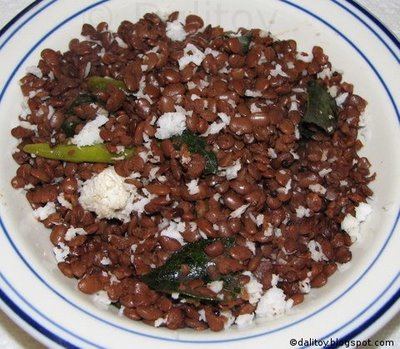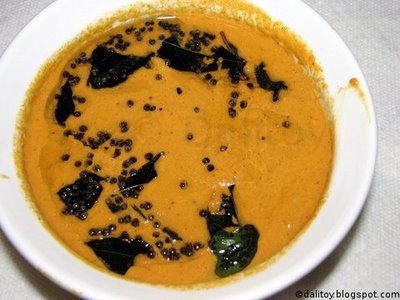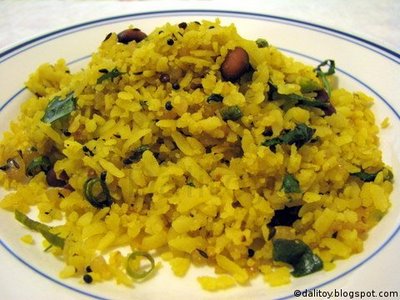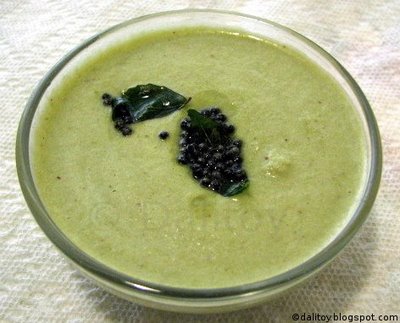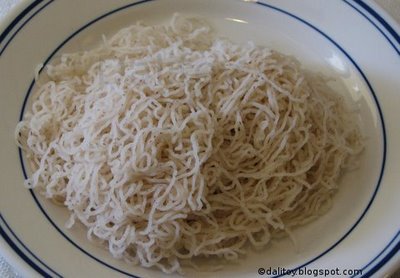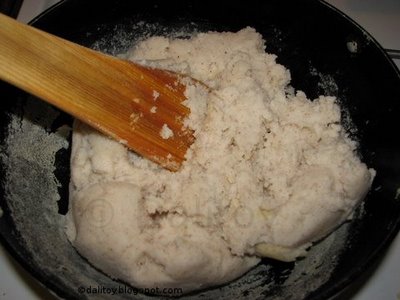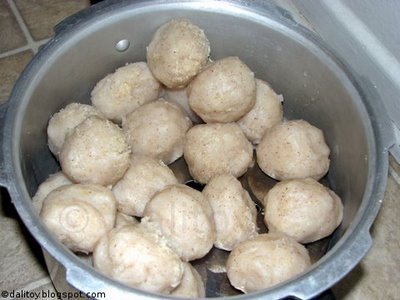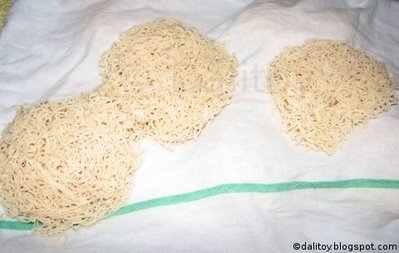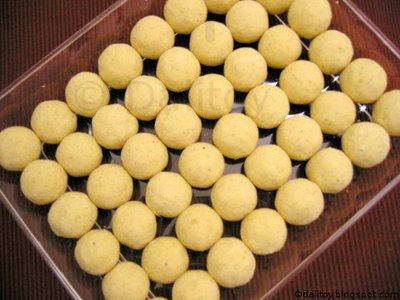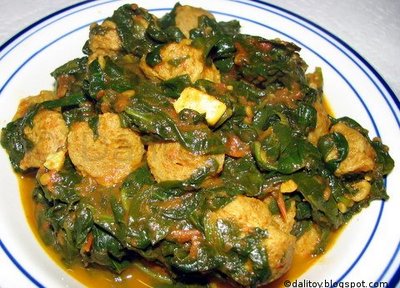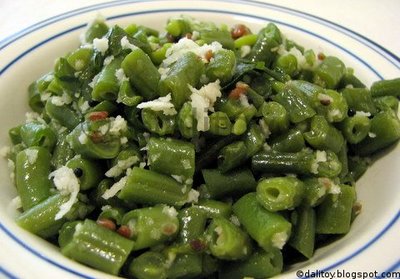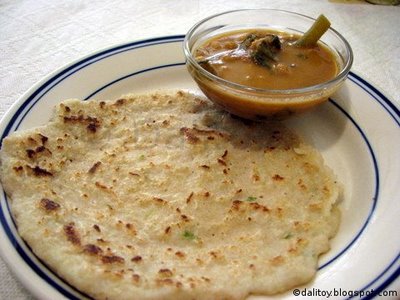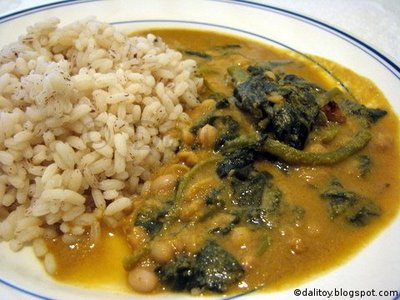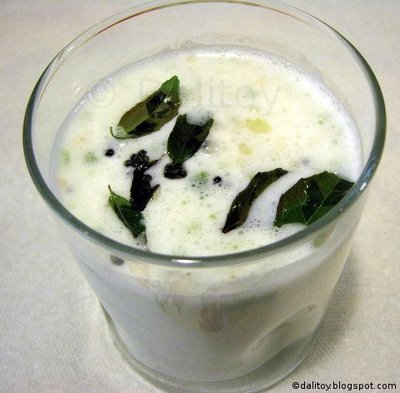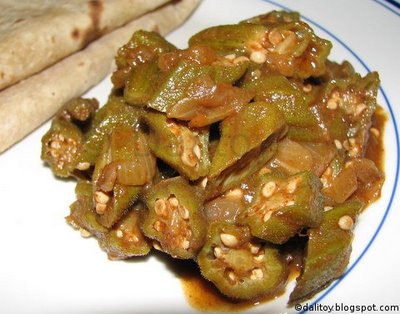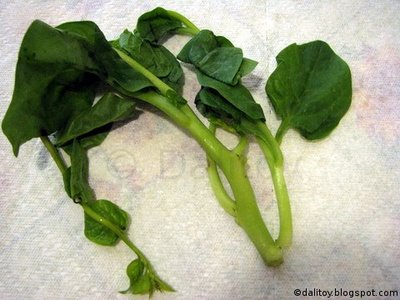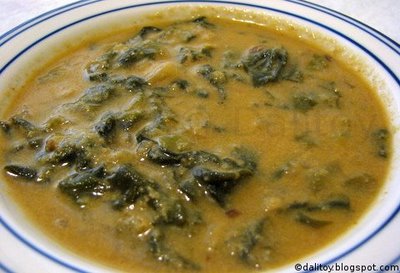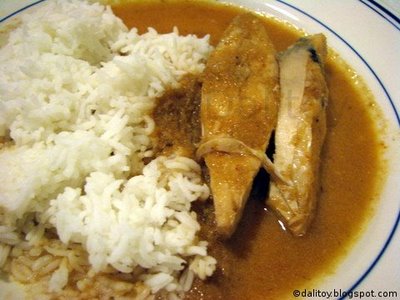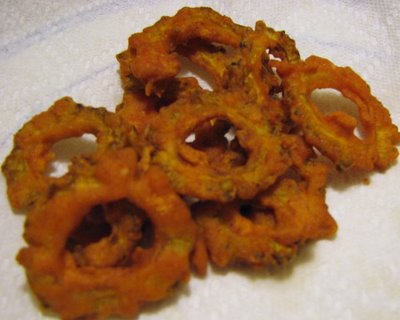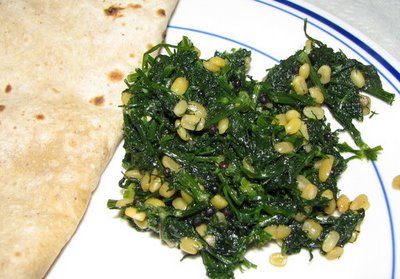
Konkanis do eat a lot of veggies and leaves that are unusual to the rest of the Indian community. That includes Bamboo shoots/keerlu, raw jack fruit/kadgi, bread fruit/jeev kadgi, kantola/pagiLa, special type of mushroom grown in Karkala-aLambe and much more. The leaves includes colocasia/pathrode paan, tere pan, maraLva paan, taikiLo, etc. I dont know names for these in any other language. These are not the recently acquired taste from Thai or Chinese cuisines, but they are the authentic Konkani delicacies. Konkanis are believed to be migrated from central Asia to Goa and then to the rest of the world. I personally think our ancestors must have been to Thailand/china or some part in South East Asia on the way! Our cuisine has so much in common with them. Having said so, today I would like to share a popular konkani delicacy today- Pathrode.
Pathrode is steamed colocasia leaves rolls stuffed with spicy rice and dal mixture. The leaves are knows are aloo/pathra in gujarati, 'Elephant Ears' to some, sold as 'taro leaves' in the Chinese supermarkets. You can buy taro roots from the Indian store and grow the leaves in your backyard. The plant needs good sunlight for a healthy growth. When not cooked properly they do itch and thats because of the needle like calcium oxalate crystals in the leaves. They are broken down on cooking. Read more
here10-12 colocasia leaves
1 cup rice
1 cup moong/green gram
1 cup coconut
pinch of hing
1 inch cube tamarind
12 roasted red chillies
salt
Soak rice and moong with enough water for 8 hrs or overnight. You could use 2 cups of rice or 2 cups of moong instead. But I like this half & half combination the best. Wash and drain. Set aside.
Grind coconut, roasted red chillies, tamarind into a smooth paste. Add hing and the rice and moong and continue to grind until its the lightly coarse like the idli rava. Do not use much water, keep it as dry as possible. Add salt and mix well.
Clean the colocasia leaves, and pat them dry. Remove the middle hard veins and any other hard of the leaves with a small knife or a peeler. Do not bother to leave the tender veins they will cook well.

On a clean surface, place the largest leaf upside down, spread the paste allover the leaf, place another leaf on top. Continue stacking up to 7-8 leaves.

Fold the edges along the length, spread the paste on the sides.

Roll the leaves. Tuck in the top corner to make the roll look perfect. Spread the paste between every folds.

Steam cook for 45 minutes. Better overcook then undercook. Actually they don't get overcooked easily. You can check by inserting a toothpick and it should pierce easily without the hardness of the leaves and should come out clean without any raw batter sticking. Let it cool down before you slice them into rounds.
Ways of Serving Pathrode
1. Quick and most adored way is to cut the patrode into rounds, pour a spoonful of fresh coconut oil.
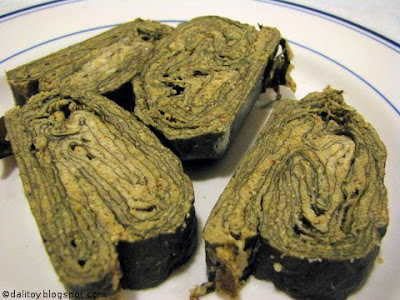
2. Pan fry the rounds with a spoonful of coconut oil. Fry till the edges are crisp
3. Gashi Pathrode - Serve with any konkani coconut sauce curries or make gashi exclusively for pathrode as follows

Gashi is a coconut sauce. Make a smooth masala paste or maasolu by grinding shredded coconut, tamarind and roasted red chillies. Roast 1/4 tsp urad dal, 3-4 methi seeds, 1/4 tsp coriander seeds and add it to the paste and continue to grind for a minute. Boil the masala with little water and 1/2 onion chopped. Add the pathrode pieces to it and cook on low flame till the water evaporates and the gashi becomes thick.
4. Pathrode Usli - usually made with leftovers

Heat 3 tsp oil of oil, make a seasoning with mustard, urad dal, curry leaves, broken red chillies and onions. Fry till onion is golden brown. Add chopped pathrode, little salt and fry on low flame till ii becomes little crisp.
Check out similar recipes by
Shilpa &
Vee

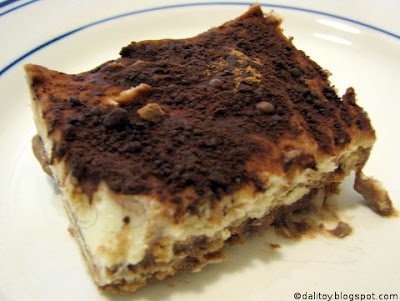

 On a clean surface, place the largest leaf upside down, spread the paste allover the leaf, place another leaf on top. Continue stacking up to 7-8 leaves.
On a clean surface, place the largest leaf upside down, spread the paste allover the leaf, place another leaf on top. Continue stacking up to 7-8 leaves.  Fold the edges along the length, spread the paste on the sides.
Fold the edges along the length, spread the paste on the sides. 






